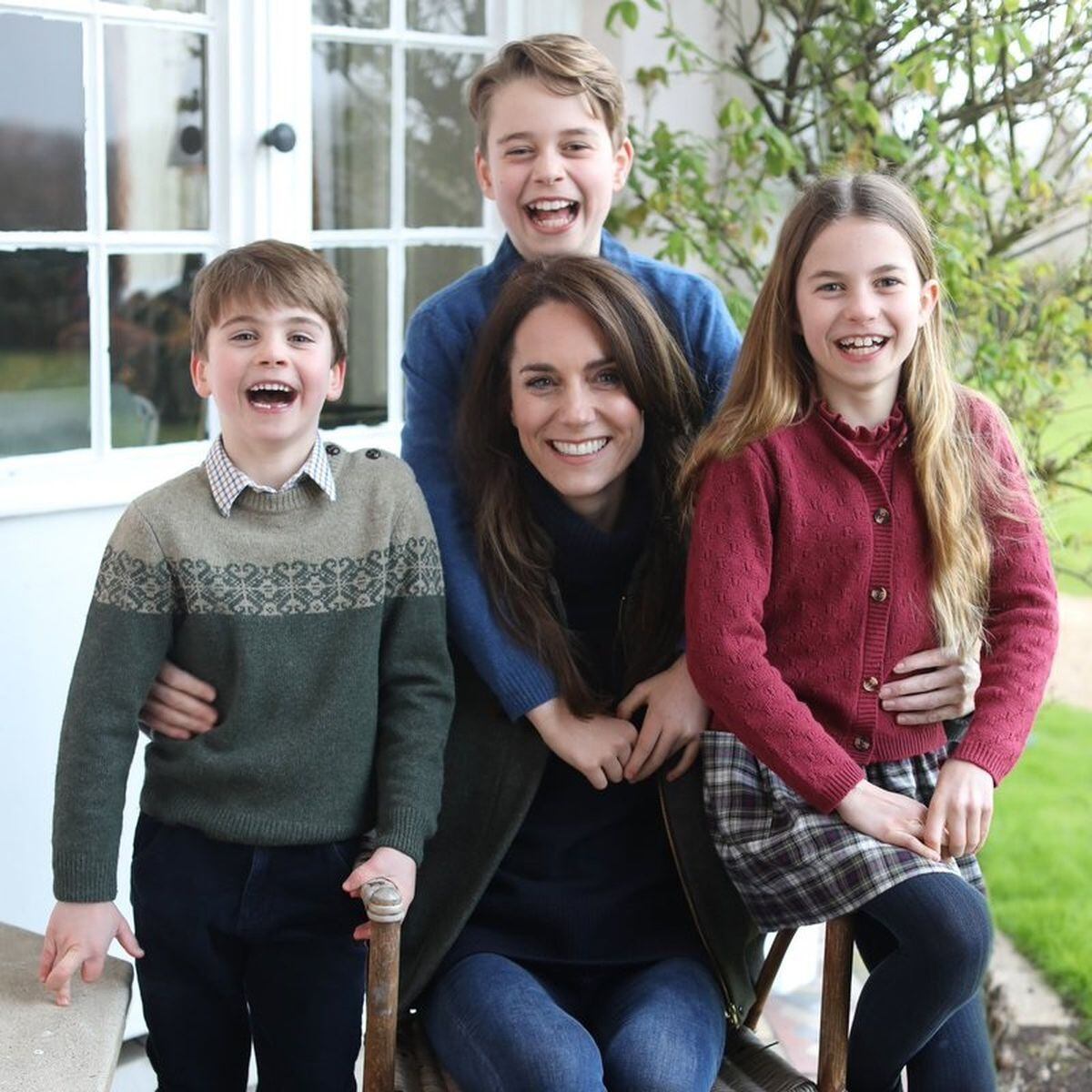The phrase was forever incorporated into the popular language of the British:
Warts and all
, ordered Oliver Cromwell, the politician who imposed a republic in monarchical England for 11 short years, to the painter in charge of his portrait.
Samuel Cooper did not avoid any of the imperfections of the tyrant's face in his work.
Since then, the expression has been synonymous with an honest attitude, of going with the truth first.
The Princess of Wales, Kate Middleton, wanted to “retouch” the photo with which she intended to silence rumors and speculation about her health, and she has ended up plunging the English royal family into a credibility crisis that is difficult to overcome.
“This is not a new practice,” chronicler of British royalty Richard Fitzwilliams told METRO
,
recalling the historical custom of enhancing the physique of kings and princes in their official portraits.
“But if you're going to get caught up in these... let's call them... ambiguous behaviors, you better not get caught.
It does not help your public image at all […] I am sure that this type of manipulation or retouching will not happen again in the future, because it represents considerable damage to credibility,” warns the expert.
The British media had given the Princes of Wales considerable respite in recent months.
Partly due to the collective lesson that the excesses of the yellow press with Lady Di meant;
partly because of the legal punishments suffered by some tabloids in their legal battle against Prince Henry;
and in part, finally, due to the popularity among the British of Kate Middleton herself, all the newspapers respected the express request for privacy of Kensington Palace, when it announced in mid-January that the princess had undergone “abdominal surgery.” —without giving more details— and that he would not return to public life until after Easter (in mid-April).
Even when the American gossip website TMZ released, early last week, a stolen photo of Middleton in the passenger seat of an Audi 4x4 driven by her mother around Windsor, no British media wanted to publish it.
Something unprecedented in a country that had even shown the Duchess of York's lover, Sarah Ferguson, licking her big toe in the pool of a hotel in Saint-Tropez or the famous kiss between Lady Di and Dodi Al Fayed on board a yacht in the Mediterranean.
“It's a first-hand lesson in how to turn success into immediate failure.
"It is something very serious, which compromises the truth, and with it credibility," Michael Cole, the former
BBC
royalty expert who ended up managing public relations for Mohamed al Fayed, the owner of the Harrods department store.
“Communication agencies have long been obliged to detect edited or fake photos.
We can see it today with the conflicts in Ukraine or Gaza, in which the different contenders distribute propaganda images.
It's crazy.
And it has completely undermined the credibility of the royal family.
“This is not about exaggerating its importance,” Cole denounces.
The Princess of Wales has been distributing photos of her children or family events to the media for years.
She is a photography enthusiast who discovered a simple and effective way to control the
paparazzi
and her own privacy.
Her children have not had to suffer the harassment to which her husband, William of England, or his brother, Prince Henry, were subjected.
The pact, until now, had worked.
The main communication agencies - the same ones that this weekend, in unison, denounced the manipulation of the photo and removed it from their servers - distributed the photos supplied by Kensington Palace - as the administrative and communication apparatus is officially known. that surrounds the princes of Wales—without any problem.
They were innocent photos, which were used to commemorate relevant dates or congratulate the holidays.
Although warning signs have already emerged, such as the black and white image of the family last Christmas, in which a finger of little Prince Louis mysteriously disappeared, and a third leg emerged behind the chair in which Princess Charlotte was sitting. .
Social networks were flooded with jokes and ironies.
But with last weekend's photo, which for many was almost "proof of life" after weeks of lunatic theories about the whereabouts or health of Kate Middleton, the problem grew until it escaped the control of Kensington Palace.
The Princess of Wales had to apologize, hours later, and acknowledge the manipulation.
Isabel II assured on one occasion, to justify her numerous public acts, that “people had to see her to believe in her.”
Middleton has learned, the hard way possible, that in the age of artificial intelligence and editing filters it is no longer enough to be seen.
People have to believe that what they see is true.
Follow all the international information on
and
X
, or in
our weekly newsletter
.
Subscribe to continue reading
Read without limits
Keep reading
I am already a subscriber
_

